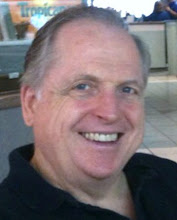“Finding who cares” is critical to making change happen. Caring motivates individuals and organizations to move through the awareness—acceptance—action phases of preparing for change (slides 8 and 9). More than that, caring can motivate individuals to move beyond “paradigm paralysis”—a locking in to a comfort zone of the old paradigm when a paradigm shift is beginning to happen. (Similar to the idea that “the sun revolves around the earth” rather than that “the earth revolves around the sun.” –The paradigm shift attributed to Copernicus.)
The USA economy of 2009 shows elements of both paradigm paralysis and an emerging paradigm shift. One way to see this in action is to look at the efforts of Team Earth. Team Earth created a new website today to encourage others to join with them (in the process of awareness—acceptance—and action) to preserve Planet Earth. Two other interconnected concepts relate to what is happening around us today.
Stephen Covey, in his book The Seven Habits of Highly Effective People, introduced the idea of “circle of concern.” The outermost circle is a broad circle of concern—the edge of awareness of the individual owning the circles. Inside the broad circle is a person’s circle of influence—an area where actions on the part of the individual can have an effect, direct or indirect. Inside the circle of influence is the circle of control—a much smaller circle where decisions and actions by the individual are largely under the control of the individual. When a person moves through awareness—acceptance—and action, most effective action takes place in the circle of control with less effective action in the circle of influence. The circle of concern is at a limit of awareness without consequence on the other two circles.
“What’s In It for Me (WIIFM)?” is second interconnected concept that is in play in today’s challenges for caring and change. True caring, accompanied by progress through the awareness—acceptance—action phases, (Slides 8 and 9) helps an individual make the personal decision and take the personal action that moves him or her beyond the limits of his or her comfort zone.
In schools, students who consistently read below-grade level frequently respond by engaging in off-task behavior, actively intervening to avoid difficult or unpleasant work. They are often successful, with the result that they do not learn what they need to learn in the classroom. In business, upper-level decision makers may not fully support a vision for change held by a few executives. In their resistance, they can actively sabotage the efforts toward change initiated by the senior executives. While successfully maintaining the “status quo” and their comfort zones, it may lead to the dissolution of the business. Some of these actions were part of the “melt-down” of the economy in the USA. Some executives whose comfort zones (and life styles) dictated that they needed high salaries regardless of the financial performance of their organizations worked to continue their executive pay-outs even when the organizations were bailed out by taxpayer dollars. Some organizations said that the money paid to executives came from the organization and that the federal dollars were used for other needs of the organization.
A few years ago Al Gore introduced a movie, An Inconvenient Truth, documenting the negative effects on Planet Earth caused by “global warming.” Evidence from observation—frequently in multimedia format accessed over the Internet—shows major changes on the planet. There is still debate regarding the cause. Whether or not global warming is the cause of what is happening to the planet, major changes are taking place on a daily basis. The feature story of National Geographic’s August, 2009, issue was on the super volcano located below Yellowstone National Park.
Team Earth and National Geographic are both looking for concerned individuals and organizations to care enough about Planet Earth to lobby for change—and to take other action. We all know how hard it is to make a personal change—such as moving to an ideal weight, becoming smoke-free, reading successfully, speaking another language fluently, engaging regularly in healthy exercise.
Actions to improve healthy lifestyle bring the focus to the health care system in the USA. Regardless of the changes proposed by President Barack Obama, many people and organizations are lobbying strongly for their personal WIIFM. The public at large needs affordable, comprehensive healthcare--that's a WIIFM for the public. How to meld an entire nation into a shared vision for positive change is a challenge for the Obama administration and for all U.S. citizens.
The American Red Cross is an organization that is part of a world-wide movement of people who care. Caring can take many forms--from donations to volunteer service to the community and to the world community.
“Finding who cares” is an important pursuit. Our “wisdom models” need to be people who care. If we want to make a positive change in our lives, we need to care enough to make it happen. If we want to make a positive change in our families, our family needs to care enough to make it happen. If we want to make a positive change in our organizations, sufficient levels and numbers of people in the organization need to care enough to share the vision and to bring the change about. How do we know when we’ve found people who care?
That will be the subject of another post. It is important to keep asking ourselves that question. Perhaps one of the characteristics will be that what they care about will be reflected in their answer to WIIFM and not be limited to themselves.
Monday, September 21, 2009
Subscribe to:
Post Comments (Atom)




No comments:
Post a Comment
Thanks for your comments. They will appear on the blog shortly.